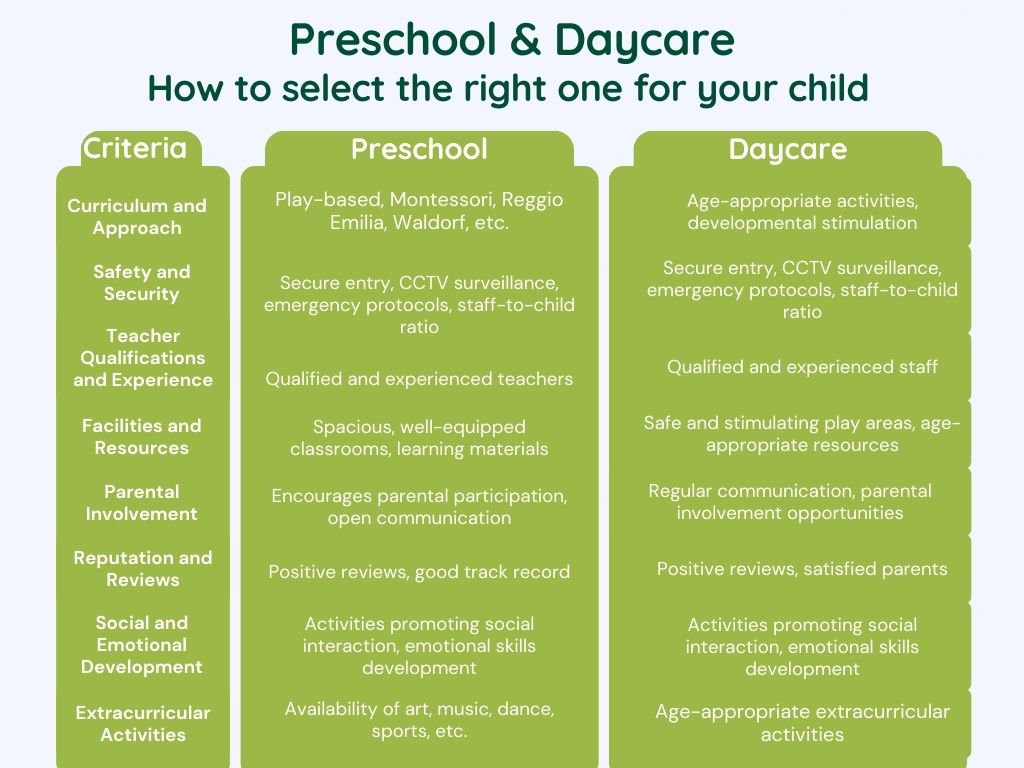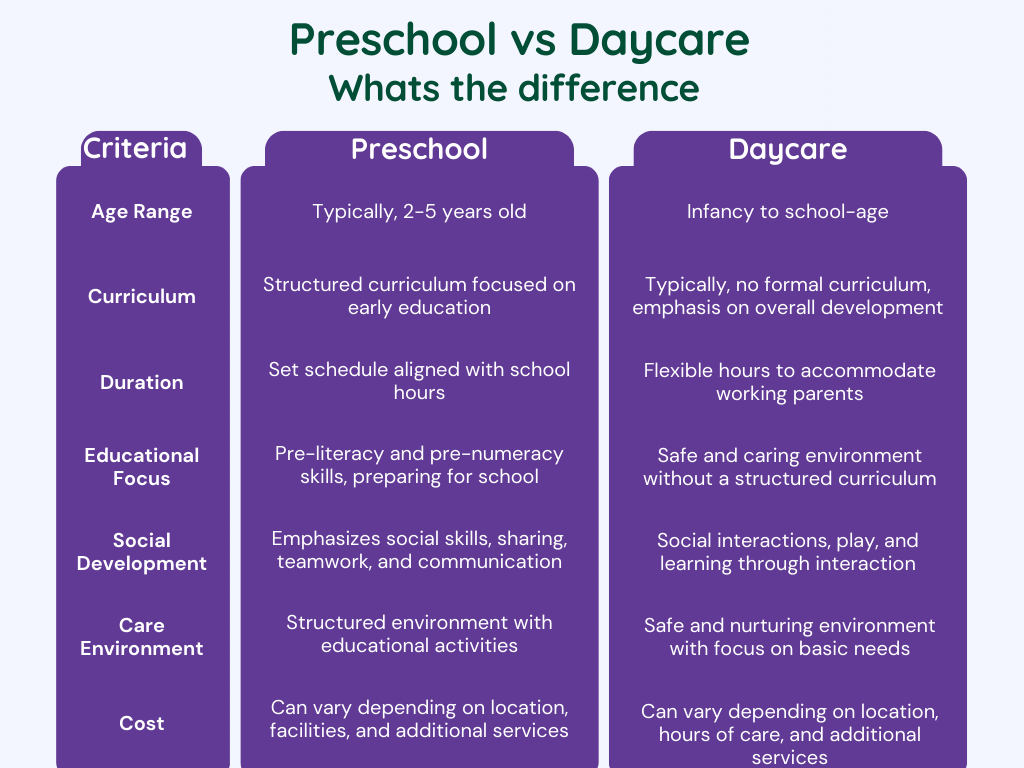
Introduction:
Opening a preschool or daycare in India presents a promising business opportunity with the growing demand for quality early education and child care. However, starting a preschool or daycare requires careful planning, knowledge of licensing requirements, and strategic decision-making. This comprehensive guide will provide you with in-depth insights on how to successfully open and run a preschool or daycare in India, covering topics such as essential requirements, licensing, creating a business plan, finding an appropriate location, facilities, policies, staffing, curriculum, marketing, automation, and franchising options.
60 second summary:
- Understand the licensing requirements and regulations for preschools or daycares in your specific state or city.
- Develop a comprehensive business plan that outlines your mission, target market, financial projections, and growth strategies.
- Find an appropriate location that is safe, accessible, and in proximity to your target demographic.
- Set up child-friendly facilities, including classrooms, play areas, restrooms, and administrative spaces.
- Create policies and procedures for admissions, health and safety, curriculum implementation, and parent communication.
- Hire qualified staff members, including teachers, caregivers, and administrative personnel, ensuring adherence to background checks and necessary certifications.
- Develop or adopt a well-structured curriculum that aligns with educational standards and promotes holistic child development.
- Implement a structured marketing plan to create awareness, attract parents, and build a strong brand presence.
- Invest in smart automation tools to streamline administrative tasks and enhance parent communication.
1. Necessary Requirements for Setting up a Playschool:
1.1 Essential Requirements for Preschool Licensing:
Understand the specific licensing requirements for preschools in your state or city. Compliance with health and safety standards, staff-to-child ratios, curriculum standards, facilities, and record-keeping are typically mandatory. Familiarize yourself with child protection laws and acts that need to be followed.
1.2 Create an Efficient Business Plan:
Develop a comprehensive business plan that outlines your preschool or daycare’s mission, target market, financial projections, operational strategies, and growth plans. Consider factors such as start-up costs, revenue streams, marketing strategies, and staffing requirements. Seek professional guidance if needed.
1.3 Find an Appropriate Location:
Choose a location that is safe, easily accessible, and in proximity to your target demographic. Consider factors such as neighborhood safety, transportation, parking facilities, and nearby amenities. Determine if you will purchase or lease the property and ensure it meets local regulations and zoning requirements.
1.4 Put Together Facilities:
Design child-friendly and age-appropriate facilities that include classrooms, play areas, restrooms, kitchen facilities, storage areas, and administrative offices. Ensure compliance with safety regulations and childproof the premises. Procure furniture, educational materials, toys, equipment, and other necessary resources.
1.5 Frame Policies:
Develop policies and procedures for admissions, health and safety, discipline, communication with parents, curriculum implementation, and staff guidelines. Establish a crisis management plan, privacy protocols, and obtain appropriate insurance coverage. Ensure your policies comply with local regulations and promote a safe and nurturing environment.
1.6 Hire Staff to Help You Run Your Preschool:
Recruit qualified and passionate staff members, including teachers, caregivers, administrative personnel, and support staff. Conduct thorough background checks, verify qualifications, and ensure adherence to child protection protocols. Provide training and professional development opportunities to enhance their skills and knowledge.
1.7 Get a Well-Built Preschool Curriculum:
Develop or adopt a well-structured and age-appropriate curriculum that aligns with educational standards and promotes holistic development. Incorporate learning activities, play-based approaches, and child-centered methodologies. Regularly review and update the curriculum to meet evolving educational needs.
1.8 Make a Structured Marketing Plan:
Develop a comprehensive marketing plan to create awareness and attract parents to your preschool or daycare. Utilize both traditional and digital marketing strategies such as advertising, social media, website development, local partnerships, and community engagement. Highlight the unique features, facilities, and educational approach of your institution.
Partner with Kiddenz to give a jump start to your admissions. Kiddenz will ensure online visibility, local online marketing, enquiries, walk-ins.
Watch the video to know more about how Kiddenz helps preschools &daycares
https://www.youtube.com/embed/WRX4nTFPWW0?start=3&feature=oembed
1.9 Invest in Smart Automation:
Leverage technology and automation tools to streamline administrative tasks, communication with parents, attendance tracking, fee management, and academic documentation. Implement a robust preschool management software that enhances efficiency and facilitates parent engagement.
1.10 Staffing:
Maintain appropriate staff-to-child ratios as per licensing requirements. Ensure your staff is qualified, experienced, and dedicated to early childhood education. Foster a positive work environment that promotes professional growth, collaboration, and continuous improvement.
2. Space Requirements:
The space requirements for setting up a preschool or daycare may vary depending on factors such as the number of children you plan to accommodate, the age group you wish to cater to, and the specific licensing regulations in your region. Generally, the following guidelines can help you determine the space requirements:
1. Preschool/Play School:
– Classroom Space: Allocate a minimum of 10-15 square feet per child for the classroom area. This space should be well-ventilated, well-lit, and conducive to learning activities.
– Outdoor Play Area: Provide a safe and spacious outdoor play area for children to engage in physical activities. The size of the play area should be determined based on the number of children you plan to accommodate.
– Administrative Area: Allocate space for administrative tasks such as office, reception, staff room, storage, and other facilities as required by licensing regulations.
2. Daycare:
– Indoor Space: Allocate a minimum of 25-30 square feet per child for the indoor area, which includes play areas, sleeping areas, dining areas, and quiet spaces. Ensure sufficient space for toys, furniture, and equipment.
– Outdoor Play Area: Provide a safe and well-equipped outdoor play area that meets the requirements for outdoor activities and playtime.
– Administrative Area: Allocate space for administrative tasks, including office, reception, staff room, storage, and other necessary facilities.
3. Cost Requirements:
The cost requirements for setting up a preschool or daycare can vary significantly depending on factors such as the location, scale of operations, quality of infrastructure, and specific amenities provided. The following cost components should be considered:
1. Infrastructure Costs:
– Construction or Renovation: Estimate the cost of constructing a new building or renovating an existing space to meet the necessary requirements. This includes civil work, electrical and plumbing work, flooring, painting, etc.
– Furniture and Fixtures: Consider the cost of child-sized furniture, storage units, play equipment, learning materials, nap mats, cots, dining furniture, and other necessary fixtures.
– Safety and Security Measures: Budget for the installation of CCTV cameras, fire safety equipment, security systems, and childproofing measures.
2. Rent and Maintenance:
– If you plan to lease the premises, consider the monthly rental cost and any associated maintenance charges. Negotiate favorable lease terms to align with your budget and projected revenue.
– Budget for regular maintenance and repairs, including cleaning, pest control, gardening, and general upkeep of the facility.
3. Franchise Fee (if applicable):
– If you choose to opt for a franchise model, research the franchise fees associated with the brand you are interested in. Franchise fees can vary and may include an initial upfront fee and ongoing royalties or other financial obligations.

Expected Return on Investment (ROI):
The expected ROI for a preschool or daycare can vary based on various factors such as the location, demand, pricing, operational efficiency, and marketing strategies. It is essential to conduct a thorough feasibility study and financial analysis to estimate the potential ROI. While specific figures cannot be provided as it depends on several variables, a well-managed and properly marketed preschool or daycare can typically generate a satisfactory return on investment within a reasonable timeframe.
To assess the potential ROI, consider factors such as projected enrollment numbers, tuition fees, operating expenses, staffing costs, marketing expenses, and the estimated time it will take to reach full capacity. Develop realistic financial projections and continuously monitor your business’s performance to make necessary adjustments for better profitability.
Keep in mind that ROI is influenced by several factors, including the quality of education and care provided, customer satisfaction, and effective cost management. Building a strong brand reputation, establishing a positive relationship with parents, and providing excellent services can significantly contribute to achieving a favorable return on investment.
It is recommended to consult with financial advisors or professionals specializing in the education sector to gain a more accurate understanding of the specific cost requirements and expected ROI for your particular preschool or daycare venture.
Franchising Options:
Major Preschool and Daycare Brands Offering Franchise in India:
1. Kangaroo Kids Preschool:
Kangaroo Kids Preschool is a well-established brand known for its innovative teaching methodologies and child-centric curriculum. They offer franchise opportunities for preschools in India and provide comprehensive training, ongoing support, and a strong brand reputation. With over 100 centers across the country, Kangaroo Kids Preschool has a proven track record of success.
2. EuroKids Preschool:
EuroKids Preschool is one of the largest preschool chains in India, offering a strong educational program and a nurturing environment for young learners. They provide franchise opportunities for aspiring preschool owners and offer extensive training, curriculum support, marketing assistance, and operational guidance. With a presence in over 350 cities, EuroKids has a wide network and brand recognition.
3. Shemrock Preschool:
Shemrock Preschool is a renowned name in the preschool industry, known for its play-based learning approach and child-friendly infrastructure. They offer franchise opportunities for individuals looking to start their own preschool. Shemrock provides support in areas such as curriculum development, teacher training, marketing, and ongoing operational assistance. With over 525 branches across India, Shemrock has a strong presence in the preschool sector.
4. Kidzee Preschool:
Kidzee Preschool is a popular brand offering quality early education programs for children. They provide franchise opportunities for preschools and offer support in areas such as curriculum development, teacher training, marketing, and operational guidance. With a vast network of over 2,000 centers across India, Kidzee is a trusted name in the preschool industry.
5. Podar Jumbo Kids:
Podar Jumbo Kids is a well-known preschool brand that focuses on a holistic approach to early childhood education. They offer franchise opportunities for individuals interested in starting a preschool. Podar Jumbo Kids provides support in areas such as curriculum planning, teacher training, marketing strategies, and ongoing operational assistance. With a strong presence across India, Podar Jumbo Kids is a popular choice for preschool franchisees.
6. Bachpan Play School:
Bachpan Play School is a leading preschool chain in India, offering a comprehensive early education program. They provide franchise opportunities for individuals looking to venture into the preschool industry. Bachpan Play School offers support in curriculum development, teacher training, marketing, and operational management. With a wide network of over 1,100 centers, Bachpan Play School has established itself as a trusted brand.
7. Little Millennium Preschool:
Little Millennium Preschool offers a child-centric curriculum and a nurturing learning environment for preschoolers. They provide franchise opportunities and support in various areas, including curriculum planning, teacher training, marketing strategies, and operational assistance. Little Millennium has a presence in multiple cities across India, making it an attractive option for aspiring preschool owners.
8. TreeHouse Preschool:
TreeHouse Preschool is a well-recognized brand known for its focus on experiential learning and skill development. They offer franchise opportunities for preschools and provide extensive support in curriculum development, teacher training, marketing, and operational management. With a strong presence in several cities across India, TreeHouse Preschool has gained popularity among parents and entrepreneurs alike.
When considering a franchise opportunity, it’s essential to thoroughly research each brand, assess their support systems, evaluate their curriculum, and understand the terms and conditions of the franchise agreement. Conducting due diligence and seeking professional advice can help you make an informed decision that aligns with your goals and aspirations.
Kiddenz: Simplifying the Process of Starting Preschool and Daycare:
Kiddenz is a comprehensive platform that offers valuable support and services to preschools and daycares, helping enhance their online visibility, marketing efforts, lead generation, teacher hiring, teacher training, curriculum development, furniture and toys sourcing, and consultation. With Kiddenz, preschools and daycares can establish a strong online presence through their user-friendly website and social media channels, enabling them to reach a wider audience and attract potential parents. The platform also provides effective marketing strategies and tools to promote the preschool or daycare, generate leads, and increase enrolments.
Additionally, Kiddenz offers assistance in hiring qualified teachers, ensuring that the staff members meet the required qualifications and have the necessary skills to provide quality education and care. The platform also provides teacher training programs to further enhance their professional development. Kiddenz understands the importance of a well-structured curriculum and assists preschools and daycares in developing a comprehensive curriculum that focuses on holistic child development. Moreover, the platform provides guidance in sourcing appropriate furniture and toys to create a stimulating learning environment. Through consultation services, Kiddenz offers expert advice and support, helping preschools and daycares navigate challenges, optimize operations, and achieve their goals effectively. With their range of services and expertise, Kiddenz is a valuable partner for preschools and daycares, empowering them to deliver exceptional early childhood education and care.
Conclusion:
Opening a preschool or daycare in India requires careful planning, adherence to licensing requirements, and strategic decision-making. By following the detailed steps outlined in this guide, you can navigate through the process successfully. Remember to consider essential requirements, develop a strong business plan, find a suitable location, create child-friendly facilities, establish policies, hire qualified staff, design an effective curriculum, implement a structured marketing plan, invest in automation, and consider franchising options if desired. With dedication, passion, and a focus on quality education and care, you can create a successful preschool or daycare that nurtures young minds and contributes to their holistic development.









